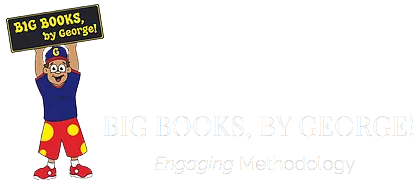Unlocking Spanish Learning with Big Books
When it comes to learning a new language, the tools and resources we choose can make a significant difference in our progress and enthusiasm. For Spanish learners, one such resource that stands out is the use of big books in Spanish. These oversized books are not just larger in size; they bring with them an array of benefits that can help learners of all ages unlock their potential to grasp this beautiful language.
In this blog post, we’ll delve into how big books in Spanish can be instrumental in learning the language. We’ll explore their impact on readers, the unique advantages they offer, and the practical ways they can be integrated into learning environments. Whether you’re a teacher, a student, or a parent, you’ll find valuable insights into how these tools can foster a better learning experience.
The Significance of Size: How Big Books in Spanish Make a Big Impact
The physical size of big books in Spanish serves more than an aesthetic purpose. Firstly, they are incredibly visual, often filled with vivid illustrations that captivate and engage learners. For young learners and visual learners, these large, eye-catching images can be crucial in retaining new vocabulary and comprehending complex concepts. Moreover, the text in big books is usually printed in a large, clear font, which is especially beneficial for beginning readers who are still familiarizing themselves with the shape and structure of Spanish words and sentences. For more details on Spanish books visit us at https://www.bbbg.org/.
A Closer Look: The Advantages of Big Books in Spanish
In addition to their visual appeal, big books in Spanish bring a plethora of advantages to the learning process:
- Enhanced Group Learning: In classroom settings, the large format allows a group of students to read together, fostering a sense of community and shared learning.
- Interactive Learning: Big books often include interactive elements such as flaps, movable parts, or textures that make learning tactile and dynamic.
- Cultural Insights: Many big books are steeped in Spanish-speaking cultures, offering readers a glimpse into the diverse traditions, stories, and lifestyles that enrich their understanding of the language.
In Practice: Utilizing Big Books in Spanish for Language Mastery
Now, let’s consider how we can effectively utilize big books in Spanish:
- Read-Aloud Sessions: The size of big books makes them perfect for read-aloud sessions, where teachers or parents can read to children, translating the text into a lively oral learning experience.
- Active Participation: Encouraging learners to point out words, discuss pictures, and ask questions about the story helps in building conversational skills.
- Language Skills Development: Use big books to focus on specific language skills, such as vocabulary expansion, grammar, and sentence structure.
- Cultural Activities: Pair reading with cultural activities related to the book’s content to deepen understanding and make the learning process more memorable.
For All Ages: Big Books in Spanish Aren’t Just for Children
While big books in Spanish are often associated with young learners, they should not be overlooked for older students and adults. The benefits of visual learning and group interaction are universal. For more advanced learners, these books can serve as a tool for discussion on more complex linguistic elements and cultural topics presented in a simplified, engaging format.
Integration in Learning Environments: Strategies for Teachers and Learners
Teachers and learners can integrate big books in Spanish into their curriculum or study routines in several ways:
- Library Corners: Create a dedicated space in the classroom or at home with a selection of big books in Spanish for independent or guided reading.
- Thematic Units: Use big books as a starting point for thematic units, which can include vocabulary lists, writing assignments, and projects based on the book’s theme.
- Story Creation: Have students create their own big book as a class project, allowing them to apply their Spanish skills creatively and collaboratively.
Conclusion: Embracing the Full Potential of Big Books in Spanish
Our big books in Spanish are a treasure trove of learning opportunities. They are more than just educational tools; they are gateways that open up new realms of understanding and engagement for Spanish learners. The sheer size of these books does not only appeal to our visual senses but also enables a more interactive and inclusive learning environment. They are catalysts for discussions, a medium for cultural exchange, and a foundation for building language skills.
For educators and parents, incorporating big books in Spanish into the learning mix is a decision that can yield profound results. They bring stories and language to life, allowing learners to interact with Spanish in a multisensory manner that traditional textbooks often cannot provide. For learners, these books offer a refreshing and less intimidating entry into reading in a foreign language, where the larger print and illustrations serve as supportive guides through the intricacies of Spanish grammar and vocabulary.
Let’s not forget that learning a language is about making connections – connections between words and their meanings, between grammar rules and their use, and, most importantly, between people and cultures. Big books in Spanish facilitate these connections with grace and ease, providing a shared platform for learners of all ages to grow their skills and their love for the Spanish language. We not only enhance language acquisition but also cultivate a learning environment that respects and appreciates the visual, tactile, and communal aspects of education.
Whether in a classroom, at a library, or in the comfort of our own homes, big books in Spanish have the potential to transform the learning experience, making it more effective, enjoyable, and accessible to all. So, let’s turn the page to a new chapter in language learning, where big books open up a world of possibilities for educators, learners, and language enthusiasts everywhere.
Read More:
